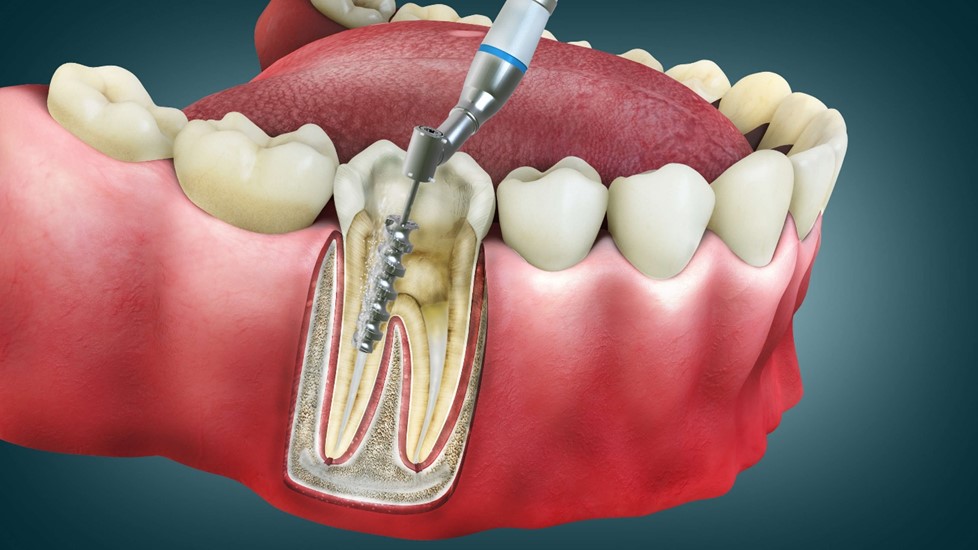8 Myths About Root Canals Debunked
Root canals have a reputation that makes many people nervous before they even arrive at the dentist’s office. Stories passed down from relatives, exaggerated scenes in movies, and outdated information online all contribute to unnecessary fear of root canals, also known as endodontic treatment. The truth is, modern dentistry has made the procedure far more comfortable, effective, and safe than most people realize. Let’s break down some of the most common root canal myths to separate fact from fiction.

Myth 1: Root Canals Are Painful
This is the most common misconception, and it’s also the easiest to debunk. A root canal doesn’t cause pain—it relieves it. The real discomfort comes from the infection inside the tooth, not from the treatment itself. Thanks to effective anesthesia and modern techniques, a root canal today feels about the same as getting a filling. And if you struggle with anxiety, sedation dentistry is also an option.
Myth 2: A Root Canal Removes the Roots of the Tooth
The name can be misleading, which is why some people believe the roots are removed during treatment. The truth is, your dentist cleans out the infected pulp and bacteria inside the tooth, but the root structure remains intact. The entire goal is to save your natural tooth rather than resorting to extraction.
Myth 3: It’s Better to Pull the Tooth
Some patients assume that removing the problem tooth is easier than undergoing a root canal. In reality, keeping your natural tooth is almost always the better option. Nothing feels or functions exactly like your original tooth. Replacing it with an implant or bridge is certainly an option if necessary, but these restorations require more time, involve additional procedures, and are more expensive overall. As long as the tooth isn’t beyond saving, pairing a root canal with a permanent crown or filling is ideal.
Myth 4: Root Canals Cause Illness
This outdated belief comes from century-old research that has since been discredited. Scientific studies have found no evidence that root canal treatment leads to disease in other parts of the body. In fact, the real danger is leaving a dental infection untreated, since bacteria can spread and pose a risk to your health. A root canal removes the infection and seals the tooth, making it a safe, effective way to protect your smile and overall well-being.
Myth 5: If There’s No Pain, There’s No Problem
It’s tempting to think a tooth is healthy if it doesn’t hurt, but that’s not always the case. Some teeth that need a root canal cause no discomfort because the infection has already killed the nerve. Other times, a small pimple-like bump called a fistula may appear on the gums near the tooth, draining the infection without causing pain. Even in the absence of symptoms, a damaged tooth still requires treatment to prevent further harm.
Myth 6: A Root Canal Leaves the Tooth Dead
Another common myth is that a tooth without its nerves is “dead.” In reality, the treated tooth remains functional and supported by surrounding tissues. It continues to look and work just like your other teeth, and the lack of nerve sensitivity simply means it won’t react to hot or cold. Once a permanent crown or filling is placed, the tooth is protected, strong, and indistinguishable from the rest of your smile.
Myth 7: Once the Root Canal Is Over, You’re All Set
Actually, root canal treatment usually occurs in stages. After the dentist removes the infected tissue, a temporary filling protects the tooth, but that isn’t the final step. You’ll still need to return for a permanent crown or filling to seal the tooth and prevent reinfection. Skipping this step may undo the results of your treatment, so prioritize follow-up care to ensure long-term success.
Myth 8: Root Canals Don’t Last
On the contrary, a properly performed root canal has a very high success rate. With regular dental checkups and good oral hygiene between visits, root canal-treated teeth often last for decades. Yes, some may eventually require extraction, but the vast majority remain healthy and functional long term.
Take the Fear Out of Root Canals
Now that you know the real root canal facts, you should realize that fear of this procedure stems from exaggerated or outdated stories, not genuine recent experiences. S&L Dental has been helping patients in Scottsdale and Paradise Valley protect their smiles for decades. We know comfort matters just as much as the results. That’s why our team focuses on creating positive, stress-free visits so patients of all ages can feel confident about their treatment.
If you’ve been putting off a needed procedure, don’t wait any longer. Schedule an appointment today at our Paradise Valley office, and we’ll determine if a pain-free root canal is the best treatment for you.
